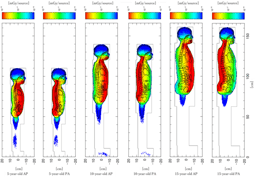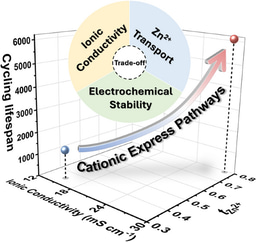Accelerated Warming in the North Pacific Since 2013
Published in Earth & Environment
It has been recognized that the global ocean surface temperatures have increased during the last few decades (IPCC 2021; Huang et al. 2024) and that these temperature increases vary from one ocean basin to another. However, SST warming trends in the North Pacific stand out as being the strongest anywhere over the past decade (Fig. 1a; Yin et al. 2023). This accelerated warming in the North Pacific may have contributed to, and partially manifest as, marine heatwaves over the past decade, such as the “Blob” in 2014-2016 and a pronounced marine heatwave in 2019 (Bond et al. 2015; Hu et al. 2017; Amaya et al., 2021; Huang et al. 2024).
Maximum warming in the North Pacific varied with latitude during 2013-2023 (Fig. 1c), with positive anomalies mainly present in the low (between 20o-30oN) and high (between 50o-60oN) latitudes during 2014-2017 and in the middle latitudes (between 30o-50oN) since 2018. In the first decade of the 21st century, the SST anomaly (SSTA) changes averaged for the global ocean and the North Pacific were comparable (Fig. 1b) and relatively small associated with the hiatus in global warming (Fyfe et al. 2016). However, since 2013, the warming in the North Pacific significantly exceeded that of the global ocean. Why this warming occurred is an important question.
The remarkable warming first emerged in the North Pacific around 2013 and seems not simply related to the major modes of natural climate variability, such as the Pacific Decadal Oscillation (PDO). The PDO has tended towards negative values over the past decade (https://www.cpc.ncep.noaa.gov/products/GODAS/ocean_briefing_new/mnth_pdo_1950.gif), which might account for some of the observed warming in the western North Pacific, but not in the eastern North Pacific where the largest warming was observed (Fig. 1a).

Fig. 1 | SSTA in the global ocean and the North Pacific. (a) Mean SSTA differences between January 2013-December 2023 and January 1981-December 2010, (b) monthly mean SSTA averaged in the global ocean (60oS-60oN; curve) and the North Pacific (green rectangle in a: 20o-60oN, 120oE-110oW; shading) for January 2000-December 2023, and (c) zonally averaged (120oE-110oW) monthly mean SSTA for January 2000-December 2023. The unit is oC. The figure is replotted based on the recent paper https://www.nature.com/articles/s41558-024-02088-x.
We propose that the accelerated SST warming in the North Pacific was mainly caused by a shallowing of the ocean mixed layer depth, especially between 40o-60oN since 2013. A shallower OML with a lower heat capacity would lead to a larger near-surface warming in response to surface heat flux forcing. However, why the ocean mixed layer has shoaled is open to debate. One argument is that increased greenhouse gas forcing has stabilized the upper-ocean, resulting in shallower mixed layers (Shi et al. 2022). In this scenario, SST warming, increased upper-ocean stability, and shoaling mixed layers reinforce one another to further accelerate warming in the North Pacific. With the increased SSTs though, there has been a tendency for increased evaporative heat loss from large areas of the North Pacific, acting as a negative feedback on the warming.
How long the warming trend in the North Pacific will continue at its current rate and what future consequences it may have are unknown. However, we have witnessed two extreme and prolonged marine heat waves already in the North Pacific in the past decade that had devastating impacts on marine ecosystems, fisheries, bird populations, and mammals (Bond et al. 2015; Hu et al. 2017; Amaya et al., 2020, 2021; Huang et al. 2024). The past decade may represent a new normal for the North Pacific, so better understanding of how changes in oceanic and atmospheric circulation conspired to produce this extraordinary warming trend, and developing improved forecasting tools to predict its future evolution, are a priority.
Notice: This post was prepared by Drs. Zeng-Zhen Hu (Zeng-Zhen.Hu@noaa.gov) and Michael J. McPhaden (michael.j.mcphaden@noaa.gov), and reviewed and edited by Drs. Boyin Huang (Boyin.Huang@noaa.gov) and Yunyun Liu (liuyuny@cma.gov.cn).
References:
Amaya, D.J., A. J. Miller, S.-P. Xie, et al., 2020: Physical drivers of the summer 2019 North Pacific marine heatwave. Nat. Commun., 11, 1903. DOI: 10.1038/s41467-020-15820-w.
Amaya, D. J., et al., 2021: Are Long-Term Changes in Mixed Layer Depth Influencing North Pacific Marine Heatwaves? Bull. Amer. Meteor. Soc., 102, S59–S66, DOI: 10.1175/BAMS-D-20-0144.1.
Bond, N. A., M. F. Cronin, H. Freeland, and N. Mantua, 2015: Causes and impacts of the 2014 warm anomaly in the NE Pacific. Geophys. Res. Lett., 42, 3414–3420. DOI: 10.1002/2015GL063306.
Fyfe, J., Meehl, G., England, M. et al., 2016: Making sense of the early-2000s warming slowdown. Nature Clim Change, 6, 224–228. DOI: 10.1038/nclimate2938.
Hu, Z.-Z., A. Kumar, B. Jha, J. Zhu, and B. Huang, 2017: Persistence and predictions of the remarkable warm anomaly in the northeastern Pacific Ocean during 2014-2016. J. Climate, 30 (2), 689–702. DOI: 10.1175/JCLI-D-16-0348.1.
Hu, Z.-Z., M. J. McPhaden, B. Huang, J. Zhu, and Y. Liu, 2024: Accelerated warming in the North Pacific since 2013. Nature Climate Change. DOI: 10.1038/s41558-024-02088-x.
Huang, B., X. Yin, J. A. Carton, L. Chen, G. Graham, P. Hogan, T. Smith, H.-M. Zhang, 2024: Record High Sea Surface Temperatures in 2023. Geophys. Res. Lett., DOI: 10.1029/2024GL108369.
IPCC, 2021: Climate Change: The Physical Science Basis. Contribution of Working Group I to the Sixth Assessment Report of the Intergovernmental Panel on Climate Change [Masson-Delmotte, V., et al. (eds.)]. Cambridge University Press, Cambridge, United Kingdom and New York, NY, USA, 2391 pp.
Shi, H. et al., 2022: Global decline in ocean memory over the 21st century. Sci. Adv., 8, eabm3468. DOI: 10.1126/sciadv.abm3468.
Yin, X., et al. 2023: Sea Surface Temperatures. [In “State of the Climate in 2022”]. Bull. Amer. Meteor. Soc., 104 (9), S153-S156. DOI: 10.1175/BAMS-D-23-0078.1.
Follow the Topic
-
Nature Climate Change

A monthly journal dedicated to publishing the most significant and cutting-edge research on the nature, underlying causes or impacts of global climate change and its implications for the economy, policy and the world at large.





Please sign in or register for FREE
If you are a registered user on Research Communities by Springer Nature, please sign in